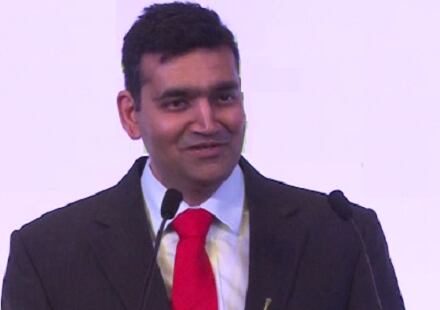The firm is now a quarter of the way to meeting its 2020 goal of a 20% reduction in emissions (1 million MT) since it began tracking its carbon footprint in 2011, setting a benchmark against natural sweeteners on the market, including cane sugar, beet sugar and high-fructose corn syrup.
“We stood back after our pioneering stevia carbon footprint in 2011 and said, PureCircle stevia already has a 75% lower carbon footprint than other mainstream natural caloric sweeteners in the marketplace. The whole benefit of PureCircle stevia is in achieving calorie reduction by replacing caloric sweeteners, but what we can do to reduce our own environmental impact?” Ajay Chandran, PureCircle's director of corporate sustainability, told FoodNavigator-USA. (PureCircle sold enough stevia in 2013 to reduce the food & beverage industry's impact by 480 billion calories, close to the total weight of the population of San Francisco, according to the firm.)
“Public health allows us to sell our product, but the ecosystem allows us to grow it. There are a lot of ramifications to consider for what we do. Are we treating the environment right? Are we recycling water? Are we creating less greenhouse gas emissions? Are we supporting local food security?”

Tightly controlled supply chain is integral to our sustainability efforts
The firm assesses its impact across what Chandran calls the three pillars of its supply chain: farming, where breeding, planting and harvesting the dried leaves are the output; extraction, where the leaves are steeped in water to separate out the sweet molecules; and purification, where the targeted stevia molecules are 95% and above. Its 2011 baseline was established following PAS 2050 methodology and calculated by UK-based third-party carbon footprint expert Verco.
“We’re unique in sense that we tightly control our supply chain from farm to product,” Chandran said. “The supply chain is very integral to our sustainability efforts, as it allows us to see different pieces of the supply chain, how one links to another, and how changes in one can have dramatic cascade impact on others.”
Water impact most notable in extraction, processing
In addition to its carbon emission reduction goals, PureCircle aims to cut water consumption by 2 trillion liters by 2020, monitoring its usage every three years. Last year, the firm cut overall water usage by 80 billion liters.
“When we did our first footprint in 2011, we looked at green water [precipitation on land that doesn't run off] and blue water [fresh surface and ground water] impacts for our supply chain. The water impact of stevia as a crop was 95-96% based on rainfall, which means it’s not dependent on pulling water out from blue water sources like wells, rivers or lakes,” Chandran said. He added that the firm has also been conscious to enter regions where water scarcity isn’t already a problem, including Paraguay, Kenya and parts of China.
“Where water is impactful for us more than in farming is in extraction and processing, particularly at the stage when we steep the leaves to extract sweetener molecules,” he said. “But in 2011, we invented a new technology called backflow extraction that allows us to run water both ways, which has reduced water use by a quarter.”
As stevia understanding evolves, more opportunities to improve efficiency
The company has found other ways to innovate for a smaller footprint, in part as understanding of the stevia leaf has evolved.
“Our tight supply chain has enabled us to do a lot of innovation that has helped us understand different molecules of the stevia leaf that are interesting for many reasons,” he said. Such innovation has enabled the firm to move beyond the negative associations with Reb-A in recent years, for example.
“It’s enabled innovation at breeding level, so we can plant the right seeds to generate and target higher yields from the same acre of land as before. Also the quality of leaf is better, which allows us to reduce the input for an acre of land at farming level. At the extraction and purification levels, our approach to innovation has been around operational efficiency and operational load levels. Most importantly, the one ton of leaves that are going in and producing ‘x’ amount of high-purity stevia are now yielding much higher amounts of high-purity stevia than before’. Now more value is being taken out of same amount of leaves as before.”
